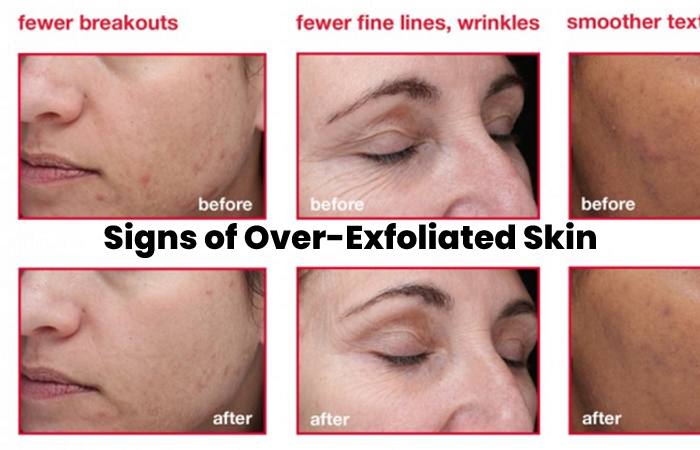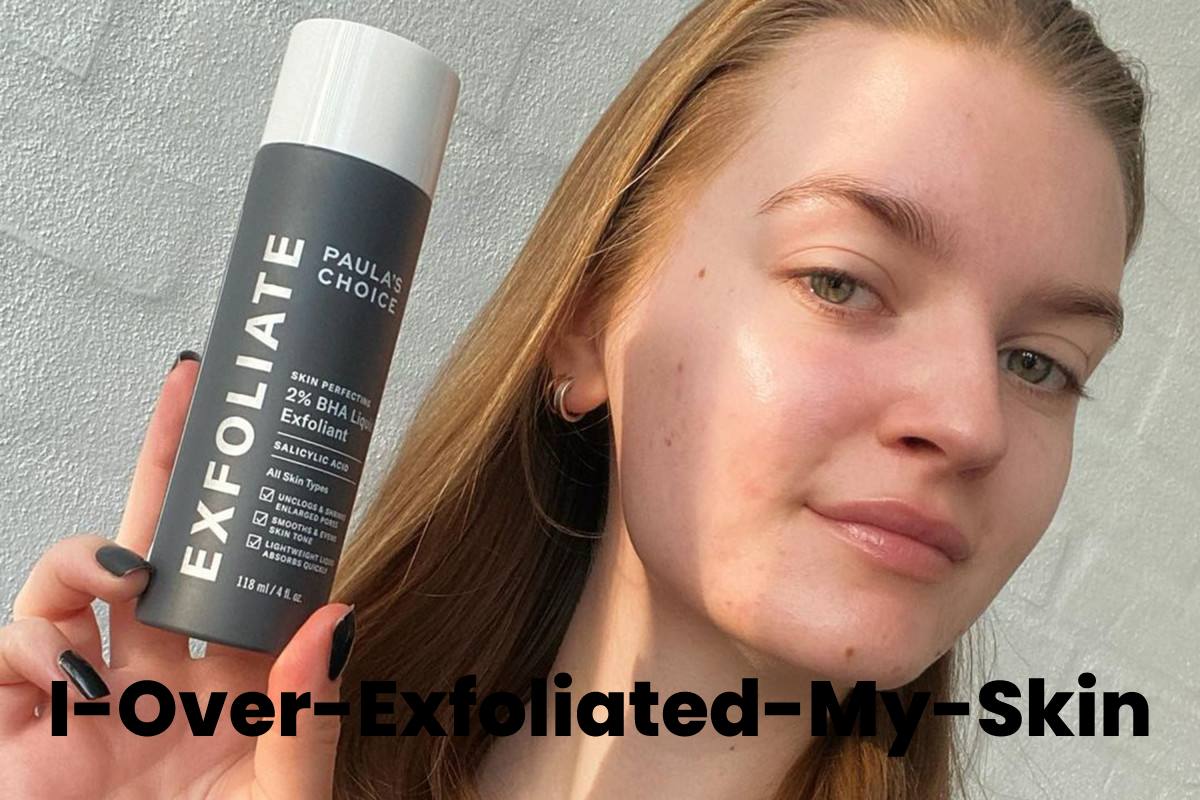I Over Exfoliated my Skin -Exfoliation is essential to any skincare standard, regardless of skin type I Over Exfoliated my Skin . However, there’s a scarce difference between it being valuable and hurtful. Assuming you leap to shed at seeing break-outs or dull skin, you might have encountered over-peeling.
Over-shedding works out this way sometimes, unfortunately. From expanded awareness and aggravations, it very well may be awkward managing this skincare misfortune. Luckily, getting your colouring in the groove again with a couple of changes to your routine is conceivable. We talked with skincare specialists for guidance on treating over-peeled skin and keeping it from happening.
Table of Contents
What are the signs of over-exfoliated skin?
Disturb, delicate skin usually flags over-peeled skin. “Quite possibly the earliest indication of any skin disturbance, including over-shedding, is that your skin will consume or sting while applying moisturizers to it,” says Robert Finney, M.D., a board-confirmed restorative dermatologist at Entière Dermatology.
Taylor Worden, an esthetician and pioneer behind Taylor Worden Skin, adds that different signs your skin is over-shed are redness, dryness, disturbance, consuming, stripping, a crude delicate inclination, responsiveness, a stinging sensation, rashes, and even break-outs.

How should you care for over-exfoliated skin?
As per Hadley Ruler, M.D., a New York City board-guaranteed dermatologist, the initial step is to quit utilizing disturbing dynamic fixings, such as retinoids, L-ascorbic acid, and hydroxy acids.
Then, have some time off from peeling out and out. “Assuming you have over-shed skin that causes more dryness and stripping, it very well may be enticing to peel the dryness off,” says Dr Finney. “Doing this will sustain the cycle, so stop any shedding, including the utilization of microbeads and alpha and beta-hydroxy acids.”
Change to delicate saturating recipes with fixings like Ceramides, Niacinamide, Glycerin, Hyaluronic Corrosive, Jojoba oil, and Aloe vera. “Utilize a delicate chemical (or simply wash with water!), utilize a thick saturating cream and sunscreen,” says Dr Finney. “Things that are calming, hydrating, or that assist with fixing the obstruction of your skin are important.” If you don’t have skin break-out prone skin, Dr Finney proposes utilizing a thicker salve like Aquaphor ($5; target.com) to help calm and saturate your skin.
An ideal course of action for your skin is to scale back broad schedules and adhere to the nuts and bolts — purging, saturating, and sun insurance. “Less item is something else for your skin to recuperate,” says Worden.
How can you prevent over-exfoliated skin?
Begin slow and pay attention to your skin. “Not every person squeezes into the exemplary skin types, so pick an exfoliator that matches your skin concerns,” says Dr Finney. Assuming you have skin inflammation inclined or slick skin, he suggests picking an exfoliator with salicylic corrosive. Dry skin types benefit from searching for an exfoliator with hydrating fixings in its equation. The touchy people should search for poly-hydroxy acids, a delicate peeling substance.
“While adding peeling into your daily practice, I suggest beginning two times every week, for the most part,” says Dr Hadley. “The recurrence can be expanded as endured if the skin isn’t excessively dry or bothered.” In addition, sleek skin types can shed up to three to four times each week, while delicate skin may need one.
Notwithstanding skin type, different variables to consider while peeling are the climate. “Shedding is more straightforward to endure during the hotter months, so frequency…changes with the seasons,” says Dr Finney. At last, everything revolves around finding what turns out best for you.
Your pared-down daily practice “relies on how extreme the aggravation is from over-peeling,” says Mariwalla. She notes that anybody hoping to recuperate more than peeled skin “ought to 100 per cent stay away from items with synthetic acids, physical exfoliators, retinol/retinoids, scent, and liquor that will bring on additional bothering.” Suppose you need to ensure that your response expects the exfoliator referring. To (and not, for instance, a hypersensitive reaction to another skincare item), you can attempt to test it.
Your strategy will comprise of a short, essential daily practice:
- Continue to wash your face daily— switch to a super-gentle, non-foaming cleanser if you don’t use one already.
CLEANSER- Ceramic Slip
- Applying cream will help skin recuperate and reinforce its hindrance from the harm,” says Mirella. “Ideally, let’s use gentle, non-brutal fixings while getting over-peeled skin and avoiding additional harm.”
SUNDAY RILEY- CIRCLE OF TRUST
Center around fixings that fix your skin’s dampness hindrance, such as ceramides. For an additional portion of solace, place a cool, soggy fabric on your skin for 10 minutes before you apply your cream to assist with mitigating disturbance. Or on the other hand, use a substance with mitigating fixings when you feel bothersome.
ICE- CERAMIDE MOISTURE
- Your dermatologist could propose you spot treat over the day with hydrocortisone cream or an emollient to lessen the redness in your skin.
- Keep involving more than adequate SPF as a component of your daily everyday practice since safeguarding those new layers of skin is essential. “On the off chance that you will be in the sun, applying sunscreen is vital to forestall escalating disturbance/consuming of the harmed skin.”
How long should you wait to exfoliate the skin after over-exfoliating?
Everybody’s skin is remarkable, yet the standard guideline of thumb is that “it requires an entire month for the skin to cycle once, so I would give it that measure of time before attempting exfoliators once more,” says Mariwalla. Whenever you’ve held on until your skin wholly mends, it means quite a bit to battle the inclination to jump again into your old schedule the second your skin begins to think back to “ordinary.”
We as a whole need a lit-from-inside sparkle and for our saturating items to soak in better. However, there is a protected method for utilizing exfoliators. Begin with using compound or physical exfoliators only once or twice every week and move toward more customary use as your skin endures it. Scale back your peeling meetings when you begin to encounter any inadequate responses.
Conclusion
If you’re using a physical exfoliator, ensure you’re not scouring too brutally. If you can’t resist, think about changing to a gentler, synthetic corrosive. Lactic corrosive is an excellent spot to begin if you have delicate skin, while salicylic is a go-to for slick kinds.
Also read: Skin-Care-Serum, which is suitable for Skin benefits and more

